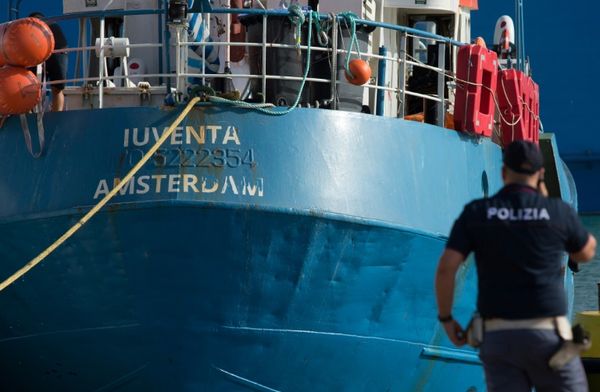
While most other crofters are minding their fields for lambs, we are watching the water. Loch Eil reflects the soft grey clouds rolling down the corries, but closer inspection reveals milky drifts below its surface. The mussels are spawning.
Mytilus edulis release sperm and eggs into the water, making a swimming soup of fertilisation that births billions of mussel larvae. These infinitesimal shellfish float freely with the current and tide.
Crofters have long gathered shellfish; what was once survival is now known as diversification. And today, before the first cuckoo has called, my partner and his brother are loading the workboat with bags of rope, preparing to catch this year’s first mussel spat.
The engine rumbles to life, spooking a heron into flight. The boat motors away towards the longlines, mist rising all around. Gulls perched on each grey float regard its approach with indifference; an otter slips into the loch, leaving behind empty crab shells.

The two men will tie 15,000 metres of weighted and textured rope on to a 220-metre pair of headropes. Once the juvenile mussels attach their byssal threads to the rope, they might be the size of a grain of sand. By October, their length could be anything from rice kernel to thumbnail. Reproductive maturity is a few months away then; these young mussels should contribute to the spat for two more springs before they are ready for harvest.
That harvesting can happen throughout the year, but spat collection is on nature’s timetable. And spawning patterns are becoming less predictable in some parts of the world. Seawater temperatures and rising CO2 levels are factors in a successful spat collection, just as much as nutrients, tidal range, currents and salinity; rope structure and size, its depth in the water. Sustainable farming can mean constant adjustments to work with the mussels’ own ecosystem.
The mussel population in this loch thrives in the top four to five metres, where there is less predation from sea urchins and starfish. And greater light levels near the surface means there’s also more food.
Lean over the side of the boat and at first all you see is yourself and a silver sky. But follow the ropes. Sunlight reaches down to the end of each dropper, revealing filaments and fibres wafting in the depth. That sunlight feeds phytoplankton, which feed mussels, which will, eventually, feed us.
• Country Diary is on Twitter at @gdncountrydiary







